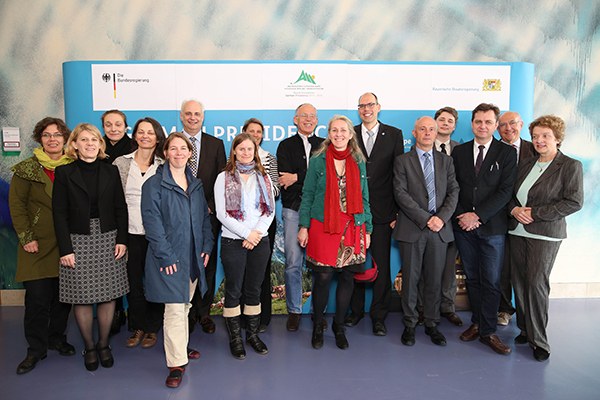Alpine Convention
The Alpine Convention is an agreement between various countries for the protection and sustainable development of the Alpine Region. It was signed on November 7th, 1991 in Salzburg (Austria) by Austria, France, Germany, Italy, Liechtenstein, Switzerland and the EU. Slovenia signed the Convention on March 29th, 1993. Monaco became a party on the basis of a separate additional protocol. The Convention came into force on March 6th, 1995.
The Alpine Convention is an agreement within the law of nations for the overall protection and the sustainable development of the Alps. It was set up upon the initiative and after long preliminary work by CIPRA. The general framework convention, which in the meantime has been ratified by all the contracting parties, is applied by means of the so called Protocols of Implementation. The protocols of implementation are envisaged for twelve sectors, and protocols already exist for eight sectors:
- Spatial planning and sustainable development
- Conservation of nature and the countryside
- Mountain farming
- Mountain forests
- Tourism
- Energy
- Soil conservation
- Transport
The protocols regarding the following sectors
- Population and culture, Prevention of air pollution, Water management and Waste management
have not been drafted yet. The Protocols of Implementation have not been signed and ratified by all countries yet (> Ratification status).
In addition, two additional protocols have been adopted, respectively on Solution of litigations and on the Adherence of the Principality of Monaco to the Alpine Convention
In addition to protocols, two Ministerial declarations on specific topics have also been adopted in November 2006:
Since 2003, the Alpine Convention has been provided with a "Permanent Secretariat", with its office in Innsbruck. The website of the Secretariat to the Alpine Convention offers general information about the Alpine Convention.
Compliance Committee of the Alpine Convention
As an observer organisation, CIPRA International has participated in the work of the Compliance Committee since 2005. In 2014, the organisation submitted for the first time a request for reviewing a presumed non-compliance with the Alpine Convention. Many member organisations and partners of CIPRA International ask about the function of the Compliance Committee and mechanism and its impact. To answer these questions, this factsheet summarises the experience and learning’s made by CIPRA International in the past years. This paper aims at helping to use the Compliance mechanism in the most effective and efficient way in order to contribute to improve the implementation of the Alpine Convention.
| Type | Title |
|---|---|

|
Factsheet: Compliance Committee |



